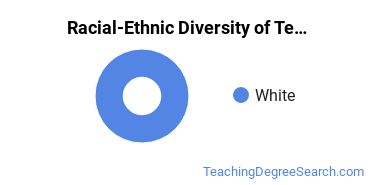Teacher Development & Methodology at Arlington Baptist University
ABU is located in Arlington, Texas and approximately 160 students attend the school each year.
Want to know more about the career opportunities in this field? Check out the Careers in Teacher Development & Methodology section at the bottom of this page.
ABU Teacher Development & Methodology Degrees Available
- Bachelor’s Degree in Teacher Development & Methodology
Online Classes Are Available at ABU
Online courses are a good option for students who need a more flexible schedule that allows them to pursue an education when and where they want. Whether you're going to school part-time or full-time, you may find distance education the right choice for you.
Are you one of the many who prefer to take online classes? ABU offers distance education options for teacher development & methodology at the following degree levels:
- Bachelor’s Degree
- Master’s Degree
ABU Teacher Development & Methodology Rankings
The teacher development & methodology major at ABU is not ranked on College Factual’s Best Colleges and Universities for Teacher Development & Methodology. This could be for a number of reasons, such as not having enough data on the major or school to make an accurate assessment of its quality.
Teacher Development & Methodology Student Demographics at ABU
Take a look at the following statistics related to the make-up of the teacher development & methodology majors at Arlington Baptist University.
ABU Teacher Development & Methodology Bachelor’s Program

About 67% of those who receive a bachelor's degree in teacher development & methodology at ABU are white. This is typical for this degree on the nationwide level. Prospective students may be interested in knowing that this school graduates 4% more racial-ethnic minorities in its teacher development & methodology bachelor's program than the national average.*
The following table and chart show the race/ethnicity for students who recently graduated from Arlington Baptist University with a bachelor's in teacher development & methodology.

| Race/Ethnicity | Number of Students |
|---|---|
| Asian | 1 |
| Black or African American | 0 |
| Hispanic or Latino | 0 |
| White | 2 |
| International Students | 0 |
| Other Races/Ethnicities | 0 |
Related Majors
References
*The racial-ethnic minorities count is calculated by taking the total number of students and subtracting white students, international students, and students whose race/ethnicity was unknown. This number is then divided by the total number of students at the school to obtain the racial-ethnic minorities percentage.
More about our data sources and methodologies.
